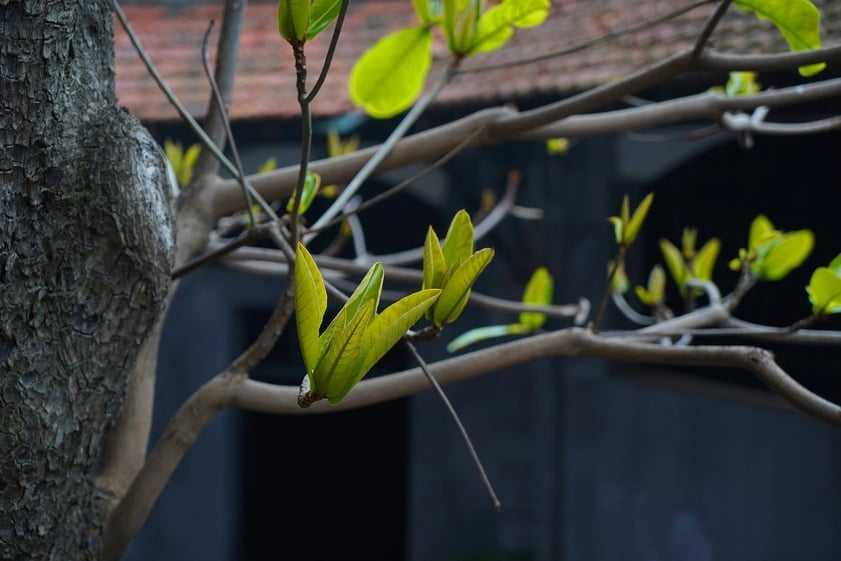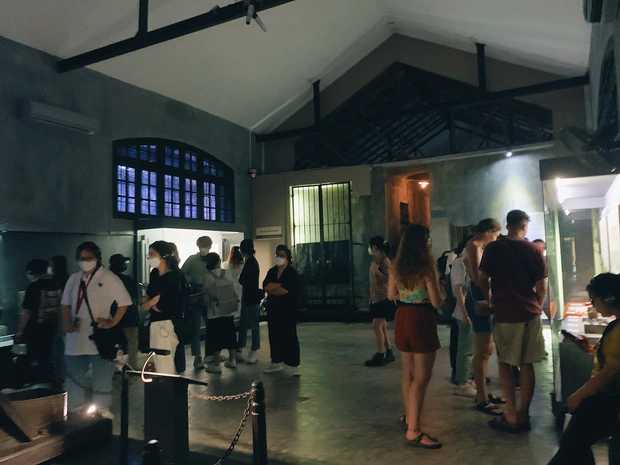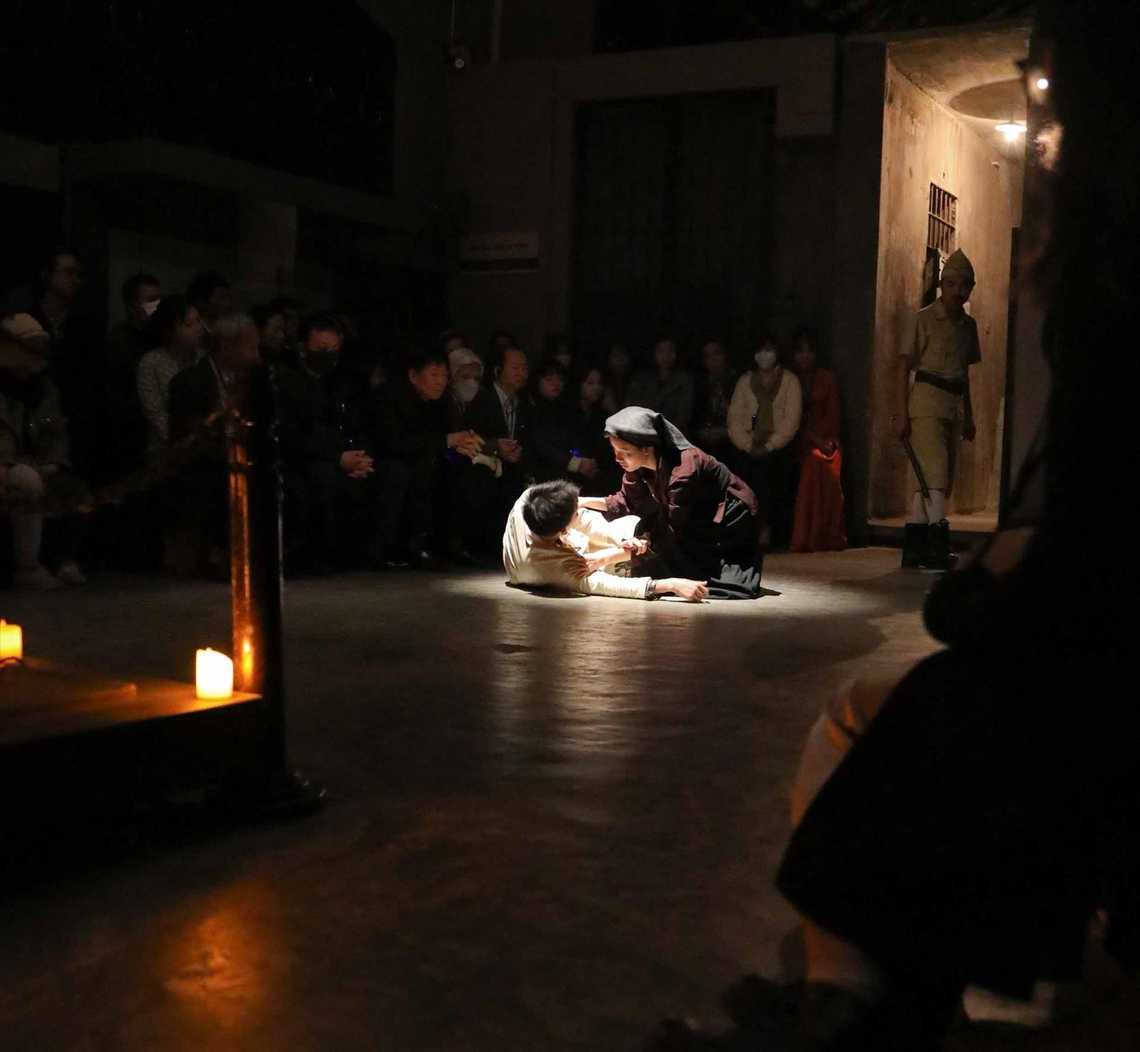
Exploring Hoa Lo Prison in Hanoi - A Journey Through History

Table Of Contents
Hoa Lo Prison is one of the largest prisons in Indochina, built by the French colonialists over 100 years ago. It served as a place of detention for thousands of patriotic individuals and Vietnamese revolutionaries, subjecting them to various forms of brutal torture.
It must be acknowledged that the appeal of Hoa Lo Prison as a historical site has greatly increased in recent times. Tourists, especially young people, are flocking to it more and more. The most noteworthy is the “Sacred Night 2: Blossom Like Flowers” tour, often referred to simply as the Hoa Lo Night Tour or the Hoa Lo Prison Night Tour. The popularity of this tour is so immense that reservations are typically fully booked for the next 1 to 2 months.
The reason for this heightened interest in the tour isn’t merely due to the “hype” surrounding it. The most crucial factor is the way the organizers have designed the tour, the experiences participants go through, and the profound meaning they come to understand and remember.
Introduction

Hoa Lo Prison, also known as the “Hanoi Hilton,” stands as a poignant symbol of Vietnam’s turbulent past and its enduring spirit. Located at 1 Hoa Lo Street in the heart of Hanoi, this historic site bears witness to a dark chapter in Vietnam’s history and serves as a testament to the resilience of the Vietnamese people.
A Glimpse into the Past

Originally situated in Nam Phu Village, Tieng Ngoc Commune, Hanoi, Hoa Lo was formerly known as the “Fire Pit.” This region specialized in crafting ceramic products such as pottery and clay stoves, earning it the moniker “Hoa Lo Village.” However, with the French colonial occupation of Hanoi, the village’s inhabitants were displaced, and their temples, including Lưu Ly, Bích Thư, and Bích Hoạ, were demolished to make way for the construction of the courthouse and prison. Due to its location on the former lands of “Hoa Lo Village,” the prison came to be known as “Hoa Lo Prison.”


Hoa Lo Prison was built by the French colonial administration in 1896. The entire complex, including the Central Prison and the surrounding areas, covers an area of 12,908 square meters. The prison’s architecture was sturdy, with an estimated construction cost of 1,212,434 Indochinese piastres. Over the years, Hoa Lo Prison held thousands of political prisoners, including revolutionary activists and soldiers who fought for Vietnam’s independence.
Visiting Hoa Lo Prison: What to Expect

Hoa Lo Prison is an essential stop on any Hanoi travel itinerary. It is often referred to as the “Hell on Earth” due to the brutality and inhumanity inflicted on its prisoners during the French colonial era. As you explore the prison, you’ll encounter various chilling artifacts, including a colossal guillotine that solidified Hoa Lo’s reputation as one of the world’s most notorious prisons.

During public executions, prisoners would lie flat on a chopping table with their heads inserted into a round hole on the machine. The guillotine, made of steel with a diagonal blade, was released with a force equivalent to 60 kg, causing a swift and grisly execution. While the guillotine was considered a more humane method of execution, it was still a cruel and brutal form of punishment imposed by the French colonialists.
Many young foreign tourists also visit this prison to gain a deeper understanding of historical narratives. Phillip, a German resident in Hanoi, has read numerous books about Hoa Lo Prison. During his holiday break, he took the opportunity to come here and delve further into the past. Phillip remarked that the way historical stories are narrated within the prison is “truly fascinating.” \ “The emotions within me felt somewhat heavy after reading those stories, but it has helped me understand the past better,” he said. The German tourist hopes that more international visitors will come to this destination in the future.
The Infamous Cachot – The “Hell Within Hell”

Cachot, a word that means “dungeon” in French, was a place used to confine prisoners who violated the prison’s rules. At Hoa Lo Prison, Cachot was infamous for being the “Hell within Hell.” It was a space characterized by its narrow, dark, and isolating conditions. Prisoners held in Cachot were entirely cut off from the outside world, confined in darkness, and had to eat and attend to personal needs within their cells.
A Collection of Artifacts Exposing Harsh Conditions
When visiting Hoa Lo Prison, you’ll come face to face with various artifacts that shed light on the inhumane treatment prisoners endured at the hands of the French colonial authorities. These artifacts include:
Utensils for Food and Drink:

To prevent prisoners from using bowls, chopsticks, or spoons as weapons in their struggles against captivity, the prison administration prohibited their use. Instead, prisoners’ food was served in wooden troughs and tin basins collectively known as “Lap lai.”
Prisoners had to fashion their own improvised utensils for eating from discarded coconut shells or coconut husks. These items were essential for their daily lives and were often procured through odd jobs or whenever they were allowed into the prison yard.
Prisoners’ Attire:
Each political prisoner was provided with two sets of clothing made from coarse white fabric, with short-sleeved shirts for the summer and long-sleeved ones for the winter. These garments featured black “MC” lettering (an abbreviation for Maison Centrale). However, the clothing was of low quality, often ill-fitting, and prone to tearing and wearing out quickly. Despite the annual allocation of two new sets, the clothing remained in poor condition, requiring frequent patching and mending.
Instruments of Torture:





Găng tay đấm bốc (boxing gloves), can xăng (gas canisters), and máy quay điện (electric generators) were some of the tools used by the French colonialists for torture and mistreatment of political prisoners.
The “Banyan of Compassion”

In the prison’s courtyard, you’ll find several large banyan trees that were grown from wild banyan seeds in the vicinity of the courthouse. These banyan trees have survived for nearly a century and have significant historical and cultural value. Formerly, prisoners would rest under the shade of these trees, while the leaves and seeds of the banyan were used for medicinal purposes. The branches of the banyan also served as makeshift pens, with the nibs often crafted from the flower’s bud.
Day Tours of Hoa Lo Prison

Daytime tours of Hoa Lo Prison are available daily from 8:00 AM to 5:00 PM, including holidays and festivals. The entrance fee is 30,000 VND per person. Some individuals are eligible for a 50% discount or free admission:
50% Discount:
- Students (with a valid student ID)
- Severely disabled individuals
- Vietnamese citizens aged 60 and above
- Individuals under social welfare policies
Free Admission:
- Children under 15 years of age
- Individuals with severe disabilities
- Those with revolutionary merits
- Members of various associations, including veterans, former prisoners of war, and anti-French resistance organizations
These day tours take you through various sections of the prison, including the daunting dungeons. Each room and exhibit is accompanied by informative signs that provide a deeper understanding of the prison’s history. The combination of displayed artifacts and explanations guarantees a thought-provoking experience.
Night Tours of Hoa Lo Prison

In addition to daytime tours, Hoa Lo Prison offers special evening tours known as “Sacred Night.” These tours cover two themes and are held from 7:00 PM to 9:00 PM on Fridays, Saturdays, and Sundays. It’s important to note that reservations for these tours should be made one to two months in advance due to limited availability.
These tours require strict adherence to dress code, movement, and discipline. At each tour stop, visitors are provided with authentic information and narratives. The guide’s commentary, archival images, and reenactments vividly convey the pain, hardship, and suffering endured by the prisoners.

One unique aspect of these tours is the opportunity for participants to step into the shoes of a political prisoner, offering a more immersive experience. The tours conclude with a tasting of light refreshments such as bánh lá bàng (banyan leaf cakes), thạch bàng (banyan tree jelly), and chè lá bàng (banyan leaf sweet soup). The tour captures unforgettable moments through images, allowing visitors to preserve lasting memories.
The specific ticket prices for the “Sacred Night” tours are as follows:
Sacred Night 2: Blossom Like Flowers – Honoring Female Heroes and Soldiers:
- Duration: 120 minutes from 7:00 PM to 9:00 PM
- Ticket Price: 399,000 VND per person
- Applicable Age: 8 – 75 years old
Sacred Night 3: Youthful Flame – Honoring Young Heroes:
- Duration: 120 minutes from 7:00 PM to 9:00 PM
- Ticket Price: 499,000 VND per person
- Applicable Age: 10 – 75 years old
Exploring Hoa Lo Prison: Practical Tips
Getting There:
Hoa Lo Prison is centrally located in Hanoi’s Hoan Kiem District, near Hoan Kiem Lake and several other tourist attractions. You can reach the prison by personal transportation or public transit. If you’re starting from Hoan Kiem Lake, follow Lê Thái Tổ Street towards Hàng Trống and proceed straight to Bà Triệu Street. Take a right turn and continue for 500 meters until you reach Hai Bà Trưng Street, where you’ll turn left onto Hoa Lo Street. The prison is located at 1 Hoa Lo Street.
What to Wear:
When visiting Hoa Lo Prison, it’s advisable to wear long pants or skirts that cover the knees and comfortable shoes that are easy to remove for the tour. Avoid clothing with bare shoulders or cleavage.
Additional Considerations:
To ensure a smooth and respectful visit to Hoa Lo Prison, please keep the following in mind:
- Do not bring any explosive materials onto the premises, and ensure that your personal belongings are placed in the designated areas.
- Refrain from littering and smoking while touring the site.
- Do not move or touch any of the displayed artifacts within the historical site.
- Light incense and place flowers only in the designated memorial areas.
- Parking is available at the main entrance of the historical site. Here, you’ll find a free motorbike parking area and car parking along the sidewalk opposite the historical site. Car parking is subject to the regulations of the site’s management.
Combining Your Visit:
To maximize your visit to Hoa Lo Prison, consider exploring nearby attractions such as the Temple of Literature, the Hanoi Opera House, Hoan Kiem Lake, the Old Quarter of Hanoi, and the Thang Long Citadel.
Conclusion
Visiting Hoa Lo Prison in Hanoi offers a profound experience that goes beyond ordinary sightseeing. It’s an opportunity to gain insight into the painful history of Vietnam and to honor the unwavering determination and sacrifice of those who fought for the nation’s independence. Make the most of your time at this historic site during your travel journey, and leave with a deep appreciation of this meaningful chapter in Vietnam’s history.
Related Posts

Legal Stuff

